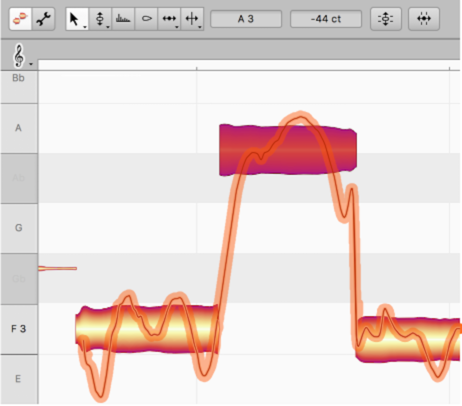Reading the Pitch Curve
Melodyne reveals to you a great deal about the vocal technique but also about the emotional aspects of a lead vocal. The most important tool in this context is the Pitch Curve.

With time, you will get better and better at reading this curved line. For practice, play through a particular passage e.g. half a verse, in a loop. Listen carefully to the singing and follow the pitch curve with your eyes.
When a word sounds wobbly, you will see from the curve that there is a corresponding fluctuation in the pitch. Compare that with another word that pleases you more: What does the curve look like there? Or pay special attention to the start of notes, where the curve often rises and falls quite sharply in a manner that is probably more to your liking in some places than in others. Try to work out what the difference is between the curve in the good places and in the bad ones. Does it have anything to do, for example, with the intensity of the excursion or the speed of the movement?
Or listen to the track one time all the way through paying attention only to the word endings. There, too, the curve often rises or falls steeply. Where does that sound good to you and where not? And can you recognize perhaps with the help of the curve what it is precisely in the parts that are less good that bothers you.
Also train your ear to isolate snippets of a vocal performance: Where exactly does something jar? Often it is only brief instants, often individual words or even individual syllables. Once you’ve pinned down the exact places where something feels wrong, take another long look at the Pitch Curve: Does it exhibit distinct characteristics in those places that you don’t find in the good places? A larger excursion, for instance, or an “uneven-looking” path? The more narrowly you can circumscribe the problem areas, the more accurately and efficiently you will be able to optimize the pitch curve later.